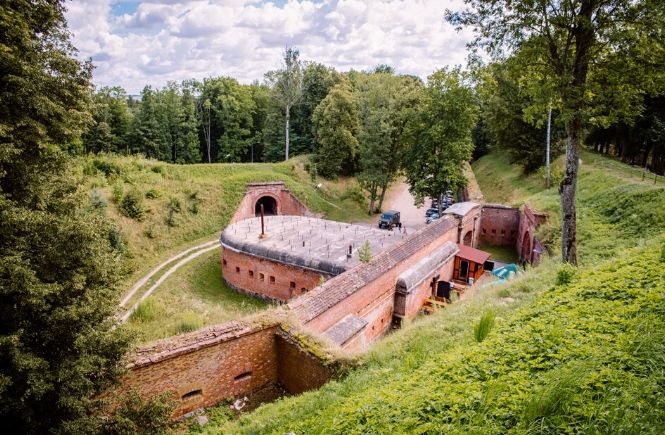Some people like the more traditional style of museum while others prefer the more modern multimedia ways of learning about history, culture and nature. Whichever option is for you, you won’t be disappointed as there is plenty of both kinds of museums to be found throughout the region!
There are over sixty museums in the region which guarantees that everyone will find something to cater for their expectations. More and more facilities are being opened and the variety on offer is expanding.
The biggest choice of attractions is found in the Museum of Warmia and Masuria with its headquarters in the old Warmian Chapter of the Teutonic Knights’ Castle in Olsztyn which also has a number of branches situated in other locations such as in the Bishops’ Castles in Reszel , Lidzbark Warmiński and in palaces in Morąg and Olsztyn, in historical town halls like in Mrągowo and Szczytno and restored historical town houses in Olsztyn.
Meet Copernicus and learn about his achievements
Various collections such as: archeology, regional history, old and modern art and regional arts and crafts are presented in the Castle in Olsztyn. There is an exhibition devoted to Nicholas Copernicus – the most famous resident of the castle. On the cloister wall there is an astronomical chart done by Copernicus that helped him show the Sun’s movement in the days preceding the Spring and Autumn equinox so thanks to the astronomical table we have the calendar.
The Castle in Lidzbark Warmiński, the historical capital of Warmia is linked to Copernicus as well. The Museum of Warmia i is located in the Castle and its permanent exhibition is devoted to prominent residents of the castle like, Ignacy Krasicki and some other influential bishops. The Great Refectory and chapel with rococo furnishing make the biggest impression among the impressive castle interiors and furnishings.
The world-famous atronomer spent thirty three years of his life in Frombork from 1510 to 1543. Here can be found the Museum of Nicholas Copernicus, the Planetarium on the cathedral hill, a branch of the History of Medicine Museum in Holy Spirit Chapel and the Astronomy Park with an observatory just outside the town. Nowadays, renovation works are being continued and are expected to finish at the end of the year. Thanks to the renovation works new places will be available.
Discover Grunwald and learn the secrets of its history
The Museum of the Battle of Grunwald in Stębark shows the history of one of the biggest medieval battles in Europe . At present you can see the exhibition entitled ‘The Great War with the Teutonic Order 1409-1411 which also shows the history of Prussian tribes. There is a collection of medieval costumes and armour in addition to multimedia shows presenting battle phases. The museum is undergoing expansion works and an arena for the reenactment of knights’ tournaments will be soon opened. The new expanded institution will be opened to the public in 2021.
The Museum of Borderlands in Działdowo with its exhibition in the town hall and gothic castle wing presents medieval times as well. Medieval exhibitions can also be found in the castles in Kętrzyn ( under renovation now), Ostróda, Nidzica as well as in the fortress which has been transformed into a hotel in Ryn.
Modern exhibitions are shown in the Museum of Archeology and History in Elbląg, the Centre of Science and Regional Development ‘Museum of Modernity’ in Olsztyn and Multimedia Museum of Prisoner-of War Camp Stalag IB and the History of Olsztynek. In Olsztynek consider visiting the Museum of Land Engineering -Ethnographic Park.
More recent military history can be learned about in the museums in Mrągowo and Orzysz, Nazi –German field headquarters from World War II in Mamerki and Gierłoż the ‘Wolf’s Lair’ where Hitler spent a few years hiding away . The 19th century Boyen Fortress in Giżycko is one of its kind . In the grounds of the fortress which is the biggest regional monument there are exhibitions in four buildings. The Historical Museum in Ełk has interesting exhibitions also worth checking out. The narrow gauge railway activated at the beginning of 20th century is a part of the museum. In summer you can also enjoy a train ride pulled by a steam engine through the picturesque surroundings.
by Rafał Śliwiak
fot. arch. UMWWM











